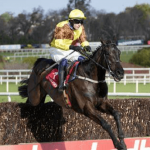RacingFormBook Horse Racing
Provider of horse racing Racecards, Ratings – Results/Racecard Data, Databases & FREE App
Provider of horse racing Racecards, Ratings – Results/Racecard Data, Databases & FREE App
Recently Highlighted by our Class Ratings
Racingformbook services are easy to use and provided in a straightforward way to assist readers in enjoying horse racing.
Our Racecards are easy to use and include fabulous Class Ratings. If you are not sure about our ratings, then please check the Free cards we publish each day. Here you can trial the ratings and see how we manage to regularly highlight big priced winners.
If you are someone that is interested in form, then you will be keen to look at our horse racing results data service. We provide Results CSV data files on a daily and weekly basis with a unique ID for each race and obtain back copies of previous years results available to everyone.
We also provide Racecards in Data file format – which serious racing fans integrate into their methodologies. RFB card data has all the days race information and horse details, thoughtfully published well in advance of any days racing.
In addition, we cater for Systems fans and researchers. You can now build your own horse racing database thanks to the unique Race Horse Form Builder App. This brilliant App will easily assist you in creating your own personal ratings for each and every race/runner. Best of all it is Free!
We have created a ready to use Access Horse Racing Database with all UK & Irish results, from 2016 to the latest Sunday in 2024.
We cover all UK & Irish racing each day. All runners riders etc and our unique Class Ratings with form history for each horse.
Now available all the results from UK and Ireland each day in CSV file format. Great for research, systems or create a horse racing results database.
For serious fans & professionals obtain (up to 2 days ahead) races & runners in data format, including our Class Ratings. Download the sample files

We have all results in the UK & Ireland going back to 2016 available in both Duo & SFF format. The Duo ones can be loaded straight into our Free ‘Form Builder’ App
New for 2024 we are now producing our racing results in a special spreasheet. Includes various prerace data like form figures for each horse
The RacingFormBook Access Database is provisioned with all racing Results from 2016. This includes working examples and sample query scripts providing a great way to analyse 8+ years racing results.
Read the latest stewards reports which can enhance your knowledge of horse racing results. Here you can find useful information into a horses running, with reports from the local racecourse stewards.
Create your own Private Handicap with the ‘Race Horse Form Builder’ App. Enables you to rate every horse in each race with your own personal ratings.
Straight from horse racing’s headquarters visit the British Horseracing Authority page where the information is automatically updated in real time.
This not only covers the latest withdrawals, but going changes, weather updates & news of inspections.
For the Irish racing check this IHRB webpage.
To further anyone’s ambition to use the information, whether this is as a point of reference, a repository for their ratings or to enable the research into racing systems.